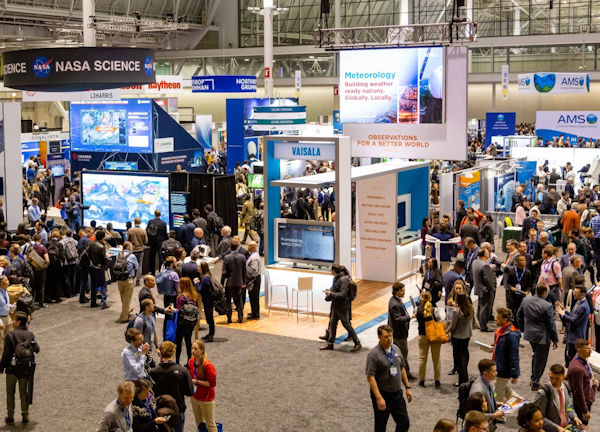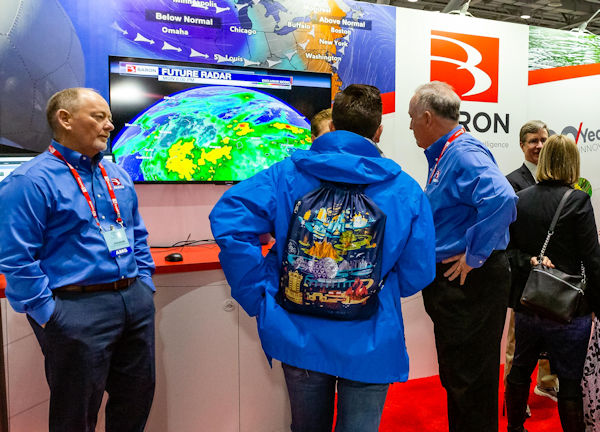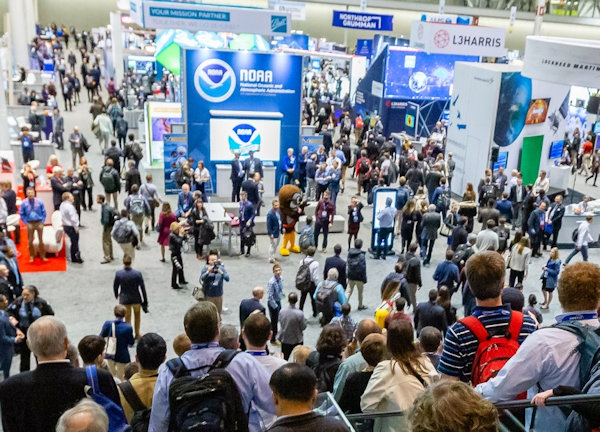Blog: A Day (Or Three) in the Life of an Account Manager.
Sean Beaudoin, Account Manager

When I’m asked to give a summary of my job, it’s hard to narrow down exactly which aspects I should focus on. Being an Account Manager at Vizzion is like having three jobs in one. On any given day, you’re equally likely to find me reaching out to potential sales prospects and answering questions about our products, reviewing a contract amendment with an existing partner to increase the level of service we provide them, or in a conference call with one of our software engineers helping a customer best integrate our services into their platform.
A perfect example of how all of these tasks and responsibilities come together was a recent trip to Boston. I was in town to attend the American Meteorological Society Annual Meeting, but I was also able to visit some prospects while I was in the city to check in on the contract approval process and offer some pricing options. Through it all, I worked with customers on some remote support issues and caught up with existing contacts – in three days, I managed to perform almost every aspect of my job.

Business trips can be fun, but there’s a lot of work that goes into organizing beforehand and making sure you have everything you need for your scheduled meetings. The cornerstone of a successful trip is preparation, because when you’re four thousand kilometers across the continent from the office, you want to make sure you can take full advantage of the trip.
My first step was to check out who would be attending the AMS conference and see if any of my existing contacts would be at the show. The AMS Annual Meeting attracts attendees from a wide variety of disciplines, including scientists, broadcasters, students, and business development professionals, who all share a common interest in weather and its surprisingly broad impact on our lives. While the connection to traffic cameras may not be immediately apparent, cameras are one of the best ways to view live weather conditions as they happen and visualize how they can impact driving conditions. I reached out to a few of my contacts who represent current and prospective customers, and I was able to schedule some meetings on the exhibition floor to catch up and discuss Vizzion’s latest developments as well as anything new on the horizon for them.
Next, I needed to confirm meeting times with the prospects that I would be visiting. Conveniently enough, the two contacts that I’d offered meetings to worked out of the same neighborhood, so I suggested that I drop by and visit both after lunch. As luck would have it, they were both available on the same afternoon, so I was able to add two more meetings to my schedule.
Once I had my meeting itinerary nailed down, I made sure that all of our essential documents were up to date: camera counts and coverage maps, marketing materials, slide decks, and more. Since Vizzion’s camera coverage increases so quickly, there’s a chance that even a coverage map from one month ago could be missing key new areas, so it always helps to have the latest numbers and graphics. Along with a healthy quantity of business cards, I prepared a dossier of notes for each meeting that I’d set up that included a brief overview of the company, information on our previous correspondence with them, and any questions or talking points I wanted to bring up during our conversation. Finally, I made sure all of the important paperwork I’d need for travel was in order: my passport, boarding passes, hotel reservations, and proof of registration for the conference.
When the day of the trip came, I boarded my flight at the Vancouver airport and landed in Boston eight hours later. My suitcase, unfortunately, didn’t make the trip with me, as it had been mislaid at YVR and would spend the next two days in luggage limbo. Thankfully, I was wearing my suit and had my briefcase with me, so what could have been an unmitigated disaster became merely a minor inconvenience. Following a quick emergency shopping trip, I headed to my hotel and checked in for a good night’s sleep.

My first full day in Boston had been set aside for my prospect meetings. I spent the morning reviewing my notes and questions to make sure I was well prepared with everything I wanted to bring up, and after lunch, I headed over to my contacts’ office buildings. I ended up arriving a few minutes early, so I took the opportunity to review my talking points before my first meeting began.
I’ve found prospect meetings to be one of the best ways to really connect with potential customers, and neither of my meetings that day were exceptions to the rule. My first prospect and I were able to bounce pricing structures and schedules off of one another and chat with other members of their product team before we settled on a configuration that worked for both of us. In my second meeting, my contact gave me a look at the camera integration process and showed me a few examples of how our collaborative project would be marketed. As I rode back to my hotel, I did a “brain dump” of everything we’d discussed and soon had a respectable few pages of notes and action items from each meeting to work with when I got back to the office.
When I got back to my room, I noticed that a few technical support issues from customers had popped up in my inbox. I spent an hour or so running some tests and addressing the problems, and once I was finished, I stepped out to see a bit of what Boston had to offer. I enjoyed an excellent meal of southern-style barbecue for dinner, and afterward returned to the hotel to go over my exhibitor notes for the show the next day.
The next morning, I jumped on the shuttle bus from my hotel to the Boston Convention & Exhibition Center, where the conference was being held. My schedule for the day was riddled with meetings, so I filled in the gaps by strolling around the show floor and walking up to any booth that looked interesting. The opportunities that can arise through walkup meetings at trade shows can be quite insightful, and I made some good connections during the course of the show. I also got a chance to see some of the newest technology from around the world in the field of meteorology, from cutting-edge weather sensors that can pick up even the slightest change in the wind to NOAA’s new methods for tracking hurricanes and other extreme weather. By the time the day was over, I had a stack of business cards in my pocket from contacts new and old as well as a slightly better understanding of the current state of meteorology. All that walking left my feet pretty sore, so I decided to relax for the evening and catch a movie.

My flight back to Vancouver left in the early afternoon the next day, so I made my last morning in Boston a productive one. I was reunited with my suitcase shortly before I needed to check out of the hotel, and after getting everything packed up, I headed back to the convention center for a couple more meetings. After I’d said my farewells to my contacts and the show, it was off to the airport. Two flights later, I was back at home again.
Even when the trade show is over, the work isn’t. The next day at the office, I had to turn my hastily scribbled notes from the previous three days into something human-comprehensible and input all the business cards I’d received into our CRM (customer relationship management) software. Next, I had to work on putting together follow-up emails for everybody I’d met, making sure to touch on the key points of our discussion and offer an action item. Finally, I had some additional support issues to look into that I’d learned about during one of my customer meetings. When all was said and done, a three-day conference had stretched itself out to nearly three weeks.

About Vizzion
Vizzion is the leading provider of road imagery for traffic, weather, road condition, and safety operations and applications. Through partnerships with over 200 different transport agencies and on-vehicle camera providers, Vizzion offers live feeds from over 100,000 cameras in 40 countries across North America, Europe, Asia, Australasia, and key markets in South America and Africa. Both on-vehicle and roadside traffic camera services are available through Vizzion’s flexible API and turnkey Video Wall application. Vizzion’s content is trusted by major apps, map providers, broadcasters, fleets, and automotive organizations. Contact [email protected] for more information.